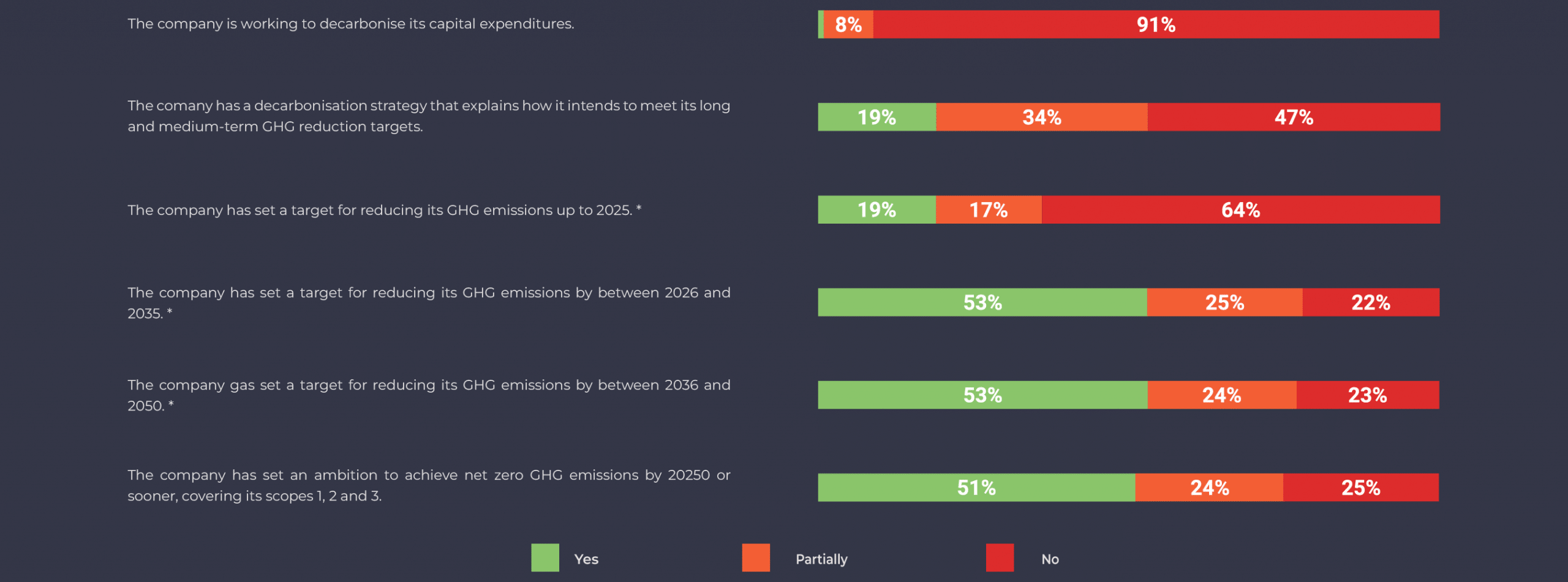After five years of activity, the investor coalition dedicated to collaborative engagement and climate action is entering the second phase of its existence. In mid-June, Climate Action 100+ announced the start of its second phase, which will run until 2030 and is characterized by changes to its goals and operations. The aim of this new phase is to strengthen its members’ engagement and accelerate the transformation of focus companies. Reclaim Finance welcomes the welcome improvements, but deplores the missed opportunity for Climate Action 100+ to encourage its members to undertake a truly effective climate-related engagement. We call on Climate Action 100+ signatories to adopt robust engagement and voting policies, including an escalation strategy with systematic sanctions.
Launched in 2017, Climate Action 100+ (CA100+) is the world’s largest collaborative engagement initiative dedicated to the fight against global warming. The coalition brings together over 700 investors representing $68,000 billion in assets under management, and targets 166 companies. Initially created for a 5-year period, the coalition decided to extend its activities to 2030.
The failure of CA100+’s first phase
The investor coalition’s track record in the first phase is meagre. The main expectations of investors for greater transparency, which correspond to the indicators of the CA100+ Net Zero Company Benchmark, were not met. At the end of the first phase, only 51% of the net-zero commitments adopted by companies covered all the scopes of emissions, and 24% did not include scope 3. Furthermore, 64% of target companies have not set short-term emissions reduction targets covering all scopes, and 91% have not committed to aligning their capital expenditure with a 1.5°C trajectory. [1]
Assessment of CA100+ disclosure indicators

* Target covering at least 95% of Scope 1 and 2 emissions and the most relevant Scope 3 emissions.
On the other hand, CA100+ investors fail to use all the engagement tools at their disposal. In particular, their votes at Annual General Meetings do not clearly sanction companies whose climate strategies are inadequate and who fail to show progress. No shareholder climate resolution reported on the “Flagged Votes” page of the CA100+ website has ever been approved, even though the coalition’s investors represent $68,000 billion in assets under management. Finally, CA100+ asset managers make very little use of the opportunity to vote against the re-election of outgoing board members [2].
A framework for assessing companies that is unable to meet its goals
For this second phase, the coalition has indicated that it wants to refocus its main goalss from the publication of key information on transition plans to the implementation of these transition plans.
However, the majority of the indicators in the CA100+ benchmark (11 out of 14), which investors are encouraged to use in their dialogue with companies, remain focused on disclosure. Furthermore, ensuring that targets are set will only be truly useful if these targets are sufficiently ambitious to enable alignment with the 1.5°C objective.
Will the investors members of the initiative be up to the task?
In response to criticism of the lack of real commitment from many investors members of the initiative, CA100+ has unveiled new recommendations for lead investors – those responsible for leading engagement with a company on behalf of the coalition. Lead investors are now required to publicly disclose their identity on the CA100+ website, and to publish details of their votes and associated justifications for resolutions flagged on the platform (Flagged Votes on their website). The CA100+’s expectations do indeed aim to make its members more accountable, but the initiative could have gone further by extending expectations to all signatories and by introducing sanctions for those who refuse to apply them.
Lead investors are now also expected to prepare an annual engagement plan, setting out objectives, planning and escalation options, and an annual review of progress achieved. While these are the right principles, there is no guarantee that they will be followed by members of the initiative, and the absence of a mechanism for excluding non-compliers from CA100+ makes this even more uncertain. Reclaim Finance therefore calls on investors who are members of Climate Action 100+ to adopt robust engagement and voting policies, including:
- A diversification and multiplication of levers, not limited to the organization of two annual meetings as indicated in its signatory handbook [3];
- The definition of time-bound demands based on alignment with scientific recommendations, rather than on the disclosure of transition plans;
- An escalation strategy applying systematic sanctions of demands are not met by the set deadline.
Investors should also take note of the inability to engagement all the companies in their portfolios and immediately suspend all bond investments in companies that do not immediately meet certain fundamental criteria. For example, companies that do not publish full information on their impact on climate, or those that do not respect the red lines defined by science, should be sanctioned. This could potentially be the case, for example, of the 10 companies removed from the list of companies targeted by CA100+ [4], with whom investors should continue to engage.
The changes announced by Climate Action 100+ do not draw lessons from the failures of the first phase, and are insufficient to truly convince companies to align with a trajectory aiming to limit global warming to 1.5°C. Reclaim Finance calls on its investor members to strengthen their existing engagement practices, in particular by implementing systematic escalation strategies for companies that refuse to meet their demands or do not show sufficient progress towards a 1.5°C trajectory.



